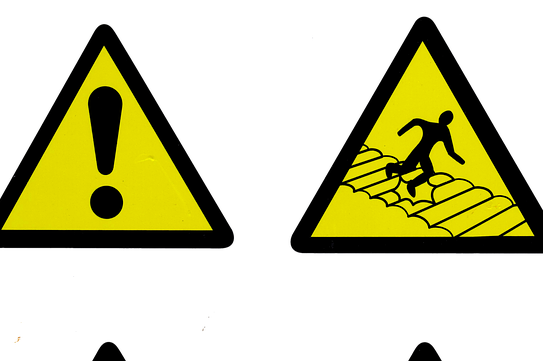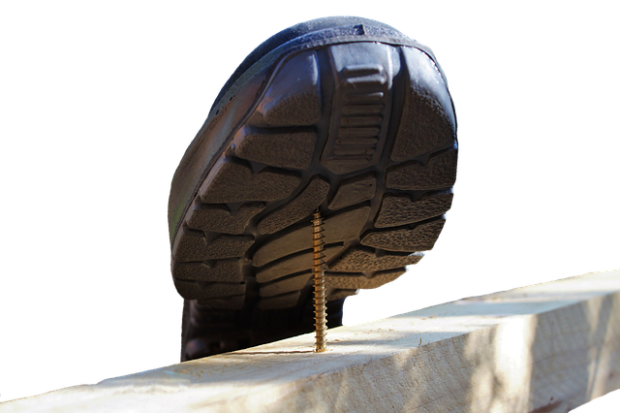Different Types Of Safety Equipment To Ensure Workplace Safety

Many people who work in high-risk professions often tend to not take safety seriously enough, despite the fact that on-the-job injuries do occurs from time to time. While this may sometimes be due to a small business employer cutting corners to save costs, this is not always the case. At times, unsupervised workers may decide that it’s faster and easier to work unencumbered without safety equipment. At other times, too, an independent contractor might impulsively decide that they can get away with not following safety precautions.
Regardless of who is in charge of the project and regardless of the reasons why it’s more convenient not to don safety equipment or go through a safety routine, you must ensure that you are safe even at work … or even if you are working on your own DIY project.
If you need safety equipment you should not only have it, you should also use it properly.
Let’s take a quick look at some standard safety equipment and how you should use it.
Safetyequipment to protect your eyes.
If you work in an area where there is flying debris or dangerous fumes, it’s not enough to rely on your regular glasses to prevent damage to your eyes. You should wear prescription safety glasses. Your eyesight is invaluable; the last thing you want to do is endanger your vision because of a moment of carelessness.
Safety equipment to protect your feet.
Foot and ankle injuries on the job are surprisingly common, and they are either caused by the victim not wearing any type of safety shoes or boots or because of not selecting the right type of safety footwear for the type of environment they are working in.
Considering the advancements in safety footwear in recent years, it’s also surprising that there is often little awareness about the value of this type of safety equipment in the construction, fishing, and logging industries. These types of shoes should also be worn by electricians, as well as by factory workers operating heavy equipment.

The worst type of foot injuries includes crushed feet, broken foot bones, damage to toes, loss of toes, puncture wounds, lacerations, cuts, burns, and electric shocks. Minor injuries, like fractures and sprains, can also occur by slipping, tripping, or falling.
Safety equipment to protect your hands.
According to the official magazine of the National Safety Council, workplace safety hazards to the hands can cause cuts, burns, or chemical damage. It is important to choose the right glove for the particular type of work being done.
Safety equipment to protect your whole body.
Some jobs do require full-body protection to prevent injury from extreme hot or cold environments, splashing molten metals or hot liquids, and random sparks and flames. Protective clothing is also necessary when working with hazardous chemicals, bloodborne pathogens, and radiation.
Different types of clothing are required for different risks. For instance, someone working around sparks, flames, or hot liquids needs to wear flame-retardant, heat-resistant fabrics while someone who works around bloodborne pathogens or chemical hazards needs to wear rubber, neoprene, or PVC clothing.
Five tips for purchasing safety equipment:
First, never purchase safety equipment that does not meet safety standards established by the American National Standards Institute (ANSI).
Second, select safety equipment based on the environment that you are working in. For instance, when buying safety shoes, wear shoes with soft soles for indoor conditions where the floors could be slippery and use boots with rugged soles for outdoor work.
Third, choose safety equipment made out of the best material for the job. This type of material will be defined by the type of environment or the nature of the work.
Fourth, decide on safety equipment that does more than just keep you safe. It also has to be comfortable to wear. It should not be too tight or too lose, cause any type of skin irritation, or cause the body to be too cold or too hot. The last thing you need is safety equipment that is problematic, one that causes an accident because it slips, slides, or rubs abrasively against your body.
Fifth, only buy safety equipment from a reputable dealer. Avoid the temptation to save money by purchasing equipment at bargain prices from an unknown dealer. While you may have to pay a higher price for premium safety equipment, it is money well-spent because it ensures your well-being.
Safety is something that no one should ever compromise on, especially when working in a high-risk profession. Doing everything possible to ensure that employees understand the importance of using safety equipment and how to use it correctly is essential. Understanding how to keep your workers safe and following all the legislation and regulations is vital. It is your responsibility to ensure all your health and safety knowledge is up-to-date and that you understand the standards required by your industry. To make it easier to keep up with changes in health and safety standards in the workplace, you may choose to subscribe to safety standard documents for your industry.

